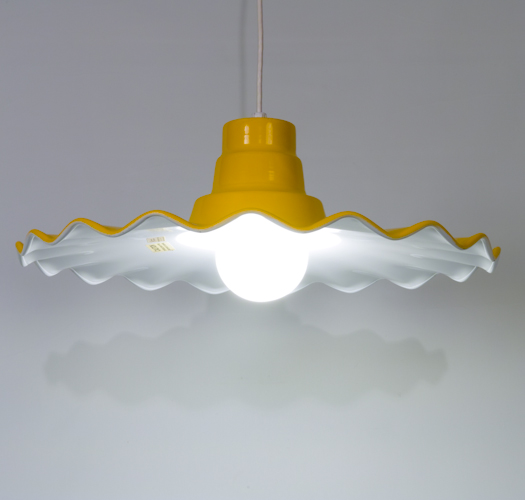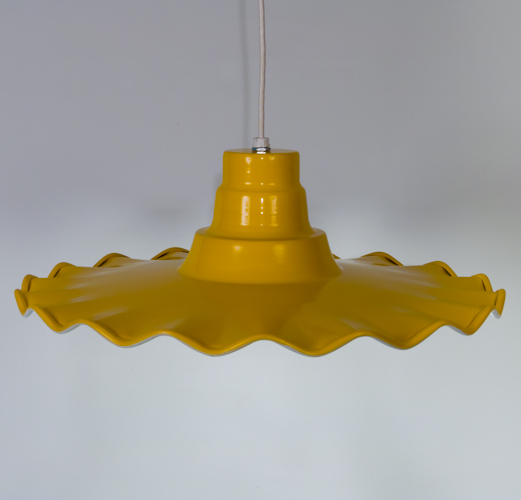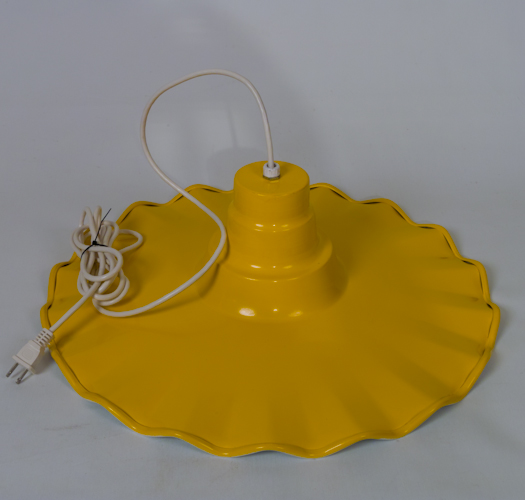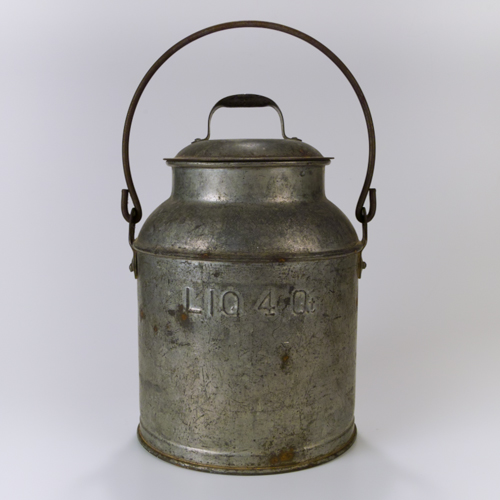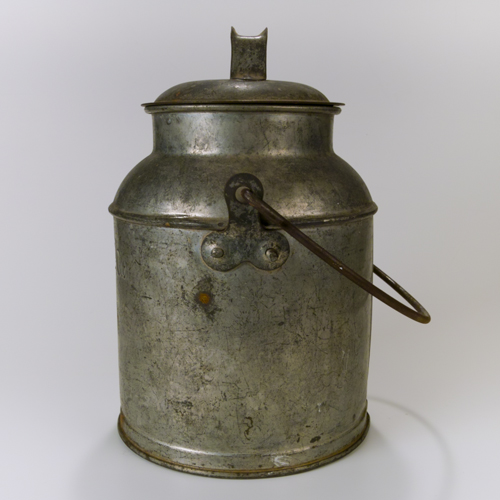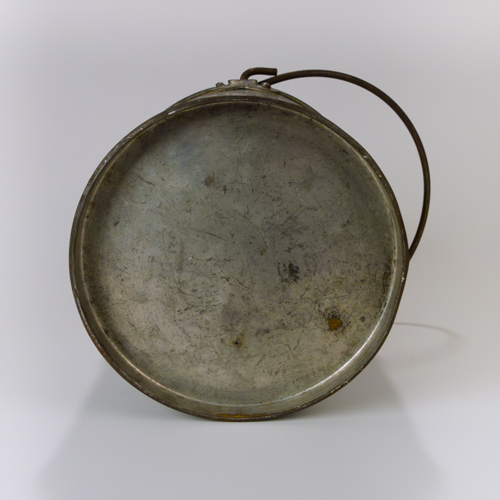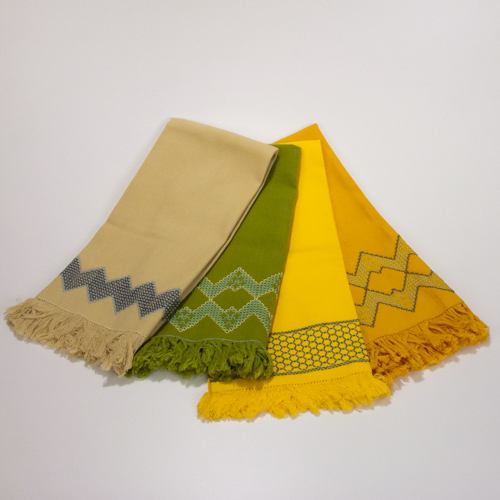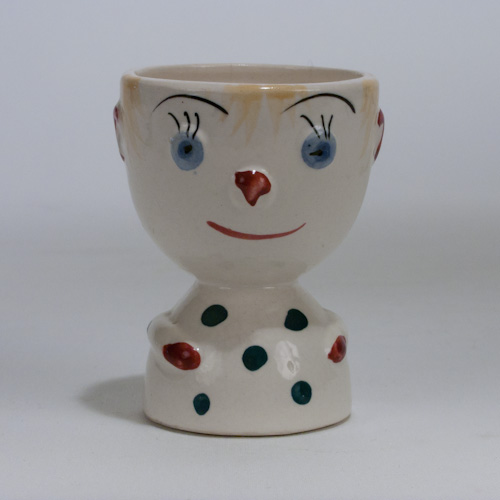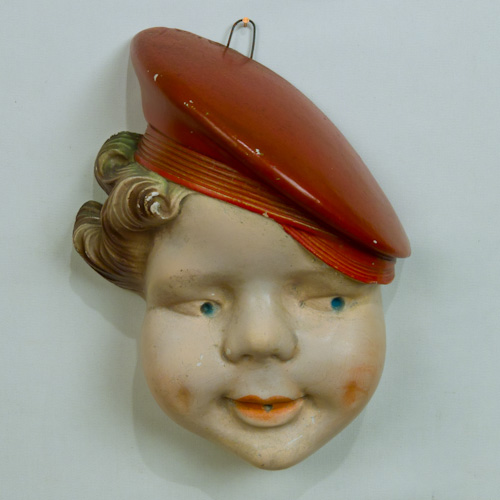

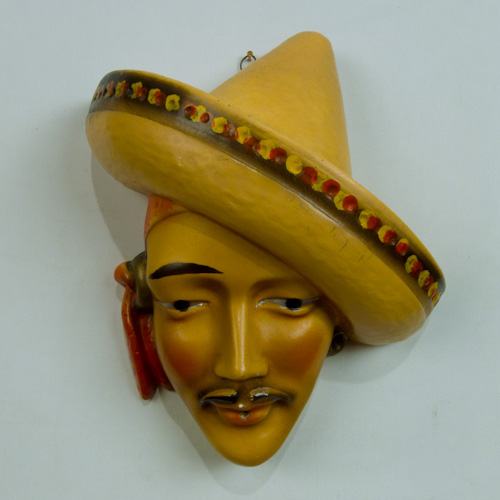
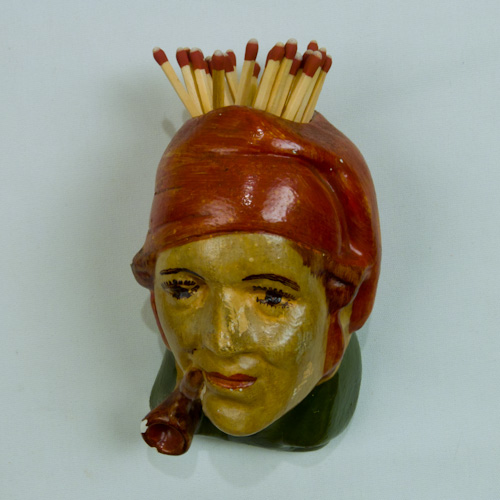
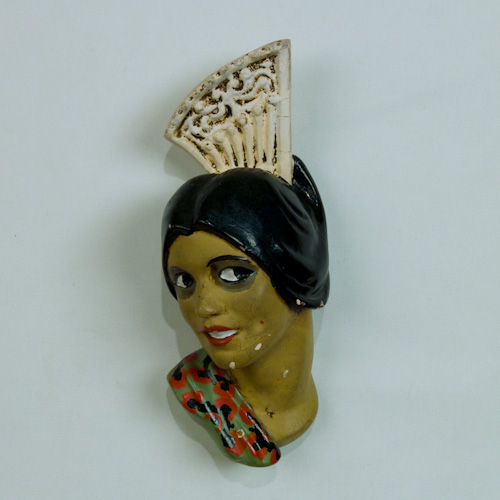
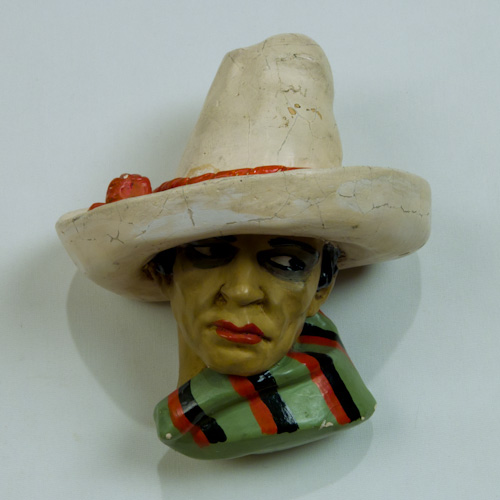
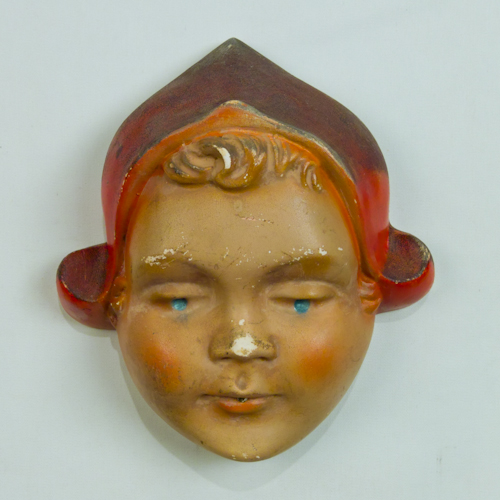
Although chalkware is a generic term for the material from which the decorative objects and accessories were made, they are actual made from plaster of Paris. Chalkware first appeared in the U.S. late in the 18th century. Popularized between the 1920s and 1940s, it was viewed as a cheaper alternative to more expensive ceramics and porcelain, chalkware enabled average consumers to purchase affordable copies. The pieces were created by first pouring plaster in to negative or cavity molds. After the plaster was hardened, the mold was removed and the chalky white unfinished piece was then painted by an employed finish “artist” with watercolors or enamel paints. The paint was another characteristic that distinguishes pricier ceramics with applied glazes from the painted chalkware alternative. Piggy banks, wall plaques, statues, smaller figurines, match holders, as well as highly collectible “string heads” were stylistically designed to add to their unique charm. Because of the nature of mold casts and the skill of the individual decorators or finish artists, each piece was idiosyncratic. Some chalkware is known as carnival chalkware, many pieces from this genre were based on characters and icons from popular culture of the times. Some pieces were meant as shelf or cabinet curios, while larger pieces could be displayed on the floor.
The pieces known by collectors as string heads, wall plaques, and wall pockets were always hung on walls. String heads were most often molded in the shape of a human head, their characters may have been based on real or fictional people, or in some cases storybook characters. While they were being made, a wire loop was partially embedded in the back of the plaster. String heads were indispensable prior to tape for securing packages. One would wrap the package in paper and conveniently dispense, cut sections, and knot the string or cord from the string head mounted on the wall. Regardless of their ornamental appeal, the demands of use, particularly true of string heads, meant the piece was frequently removed from the wall to replace the ball of string. Because plaster is inherently fragile, many examples of this type of popular commercial product, now appreciated as a form of folk art, were broken or chipped, showing distinct signs of wear during their use and often discarded.
Our collection of string heads and other chalkware is figural as is most of our folk art collection. The pieces were discovered at flea markets, antique stores and shows, during our travels in the mid 1980s. These, among others, are displayed as a group in the kitchen of our loft studio, guest always congregate in the kitchen and the string heads are always conversation pieces.
